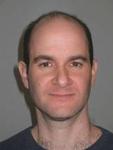Simulating Diffraction by Ray Tracing for Modeling 5G Networks
Abstract
References
Index Terms
- Simulating Diffraction by Ray Tracing for Modeling 5G Networks
Recommendations
Playable ray tracing for real-time exploration of radio propagation in wireless networks
SIGSPATIAL '22: Proceedings of the 30th International Conference on Advances in Geographic Information SystemsPlanning of cellular networks is a process in which network engineers select locations for the cellular antennas and adjust parameters like transmission frequency, transmission power and tilt. The goal of network planning is to provide cellular coverage ...
Hepta-Band Antenna for 5G Applications
AbstractA hepta-band resonance antenna is proposed for fifth-generation (5G) and designed on Taconic TLY-3 substrate, resonate at various specified frequencies and offers a bandwidth of 0.522 GHz, 1.00 GHz, 1.316 GHz, 1.894 GHz, 1.724 GHz, 3.085 GHz, and ...
Triple-Band Dual-Polarized Dipole Antenna for 5G Sub-6 GHz Communications
AbstractA triple-band ± 45° dual-polarized dipole antenna is presented in this paper. The proposed antenna covers two n77 bands and one n79 band in 5G NR frequency spectrums with S11, S22 <− 15 dB return loss. The profile antenna exhibits the measured ...
Comments
Information & Contributors
Information
Published In

Sponsors
Publisher
Association for Computing Machinery
New York, NY, United States
Publication History
Check for updates
Author Tags
Qualifiers
- Short-paper
- Research
- Refereed limited
Conference
Acceptance Rates
Contributors
Other Metrics
Bibliometrics & Citations
Bibliometrics
Article Metrics
- 0Total Citations
- 28Total Downloads
- Downloads (Last 12 months)28
- Downloads (Last 6 weeks)19
Other Metrics
Citations
View Options
Login options
Check if you have access through your login credentials or your institution to get full access on this article.
Sign in
